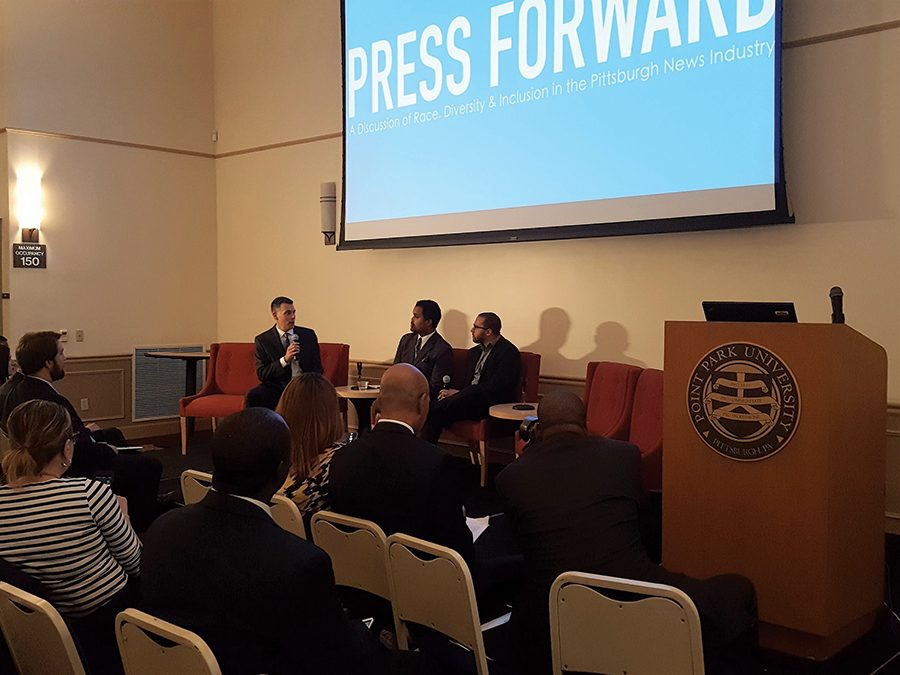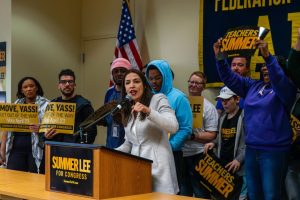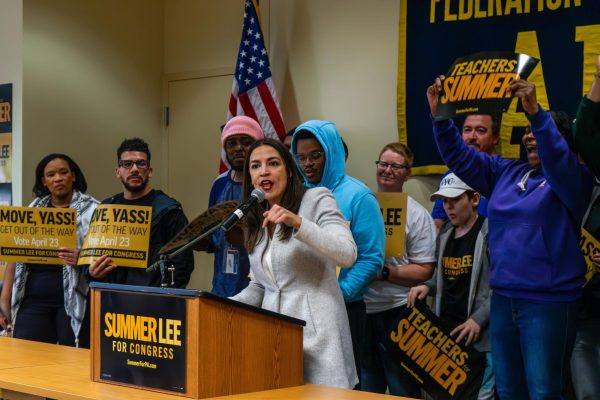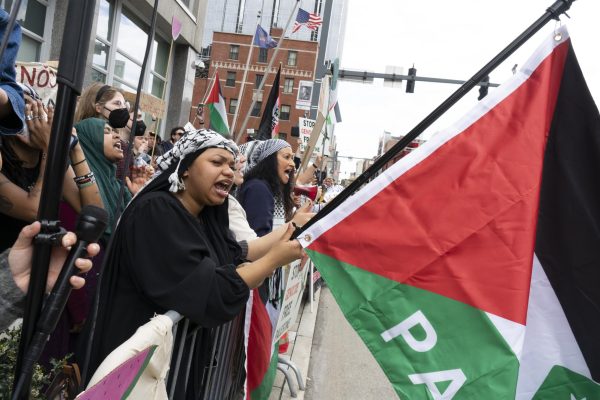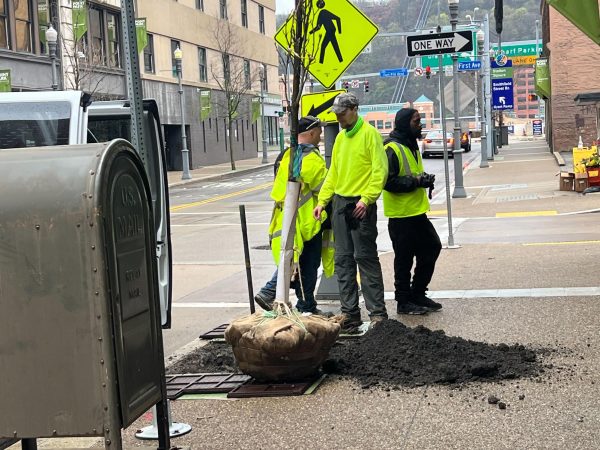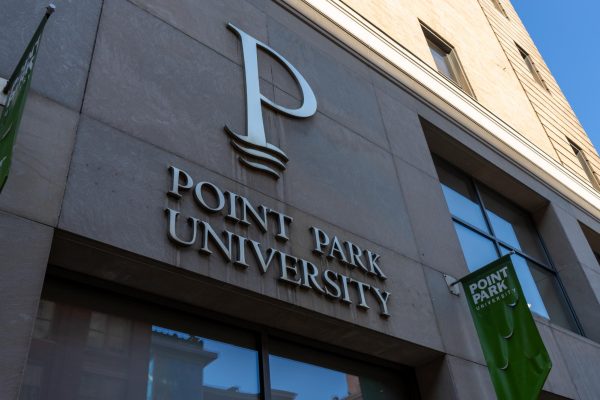Lack of diversity in media circles discussed at panel
Photo by Neil Strebig
The Pittsburgh Black Media Federation and the Center for Media Innovation discussed diversity and inclusion in the Pittsburgh news industry on Wednesday, September 21st in LH 200. Panelists included multiple journalism and media professionals, including – but not limited to -Rod Doss, Jeffrey Benzing, and Wesley Lowery, with CMI’s very own director, Andrew Conte, moderating.
September 27, 2016
When Keith Alexander and Wesley Lowery took on the challenge of covering fatal police shootings in 2015 they never imaged the greatness of the task that laid before them, let alone a Pulitzer.
Instead, the two simply approached the situation with their journalistic integrity in hand. For them, it was a story that needed to be told, and they were going to tell it in the best way possible.
“We know we were doing something that was never done before,” Alexander said in a phone interview. “It fueled us, to peel back [on a national level] layer after layer on police shootings. Let’s get this story out and shake the trees – what more can we tell – that was the motivating part.”
Alexander and Lowery visited Point Park last Wednesday to take part in “Press Forward: A Discussion of Race, Diversity and Inclusion in the Pittsburgh News Industry,” presented by the Pittsburgh Black Media Foundation (PBMF). As part of the media panel, the two Washington Post reporters discussed not only their trials and tribulations in covering their historic case study, but also the role of African-American and minority reporters in today’s newsrooms.
Despite making up more than a third of Pittsburgh’s population, people of color only occupy nine percent of the workforce in Pittsburgh newsrooms. The PBMF surveyed ten local papers including the Pittsburgh Post-Gazette and the Tribune-Review, and found that out of 425 positions, African-Americans only held 29 positions – barely seven percent.
Only the Pittsburgh City Paper had any minority reporters covering criminal justice and urban neighborhood stories.
“Over the next two years, we will be conducting an in-depth study of diversity and inclusion issues in Pittsburgh,” PBMF parliamentarian Letrell Crittenden said.
“[We are journalists] to be a voice for the voiceless and hold the powerful accountable,” Alexander said during the panel discussion.
With the civic unrest and negative public opinion surrounding police-related shootings at an all-time high, the panel stressed the importance of having people of color on staff to cover these stories.
“The more you value diversity in the newsroom, the more you value diversity in coverage,” Crittenden added.
Alexander and Lowery pointed out that as journalists, it is a sensitive issue anytime you are dealing with homicides.
“Being a crime writer, you’re dealing with life or death. You’re dealing with stories with an immediate impact,” Alexander said during a phone interview Tuesday.
The inception of social media and video in recent years has magnified violent crimes against minorities. Before video and before the Washington Post’s team broke their Pulitzer Prize-winning story following the travesties in Ferguson, there were no public records of police-related shootings unless they were filed by the police precinct themselves, an issue that caused the reporting team a large number of headaches during their research process.
Without easily accessible data, Lowery explained how the team relied on Google, local media coverage and social media to help accurately collect data and tell the story.
“We’re having this discussion because of video,” Lowery said, “[Video] changed and forced this conversation.”
Since their story broke last year, the idea of holding police and precincts accountable for unlawful actions has been one of the largest public outcries.
Alexander stressed the importance of understanding these highly stressful and volatile situations with empathy. Both officers and victims are put into “anxiety-filled situations” where adrenaline can take over, often resulting in negative consequences for multiple parties involved. While that does not mean errors in judgment are justified, it does mean that seeing the video is not the final word.
“[You] can’t represent both sides in just 140 characters,” Alexander said in regards to social media outrage. “People want to grab people’s attention without using the same journalistic skills that are used in a story, and that’s a concern.”
Alexander acknowledged that while citizen journalism is a useful tool, both reporters and non-journalists need to take precaution when using social media. He urged for more accountability towards social media postings, saying that “credibility needs to be challenged.”
“My reputation is what sells newspapers. We’re all [journalists]. We all make mistakes and we correct them,” Alexander said.
Knee-jerk reactions or posts without factual evidence can be even more damaging to potentially breaking news situations than some activists realize, according to Alexander.



